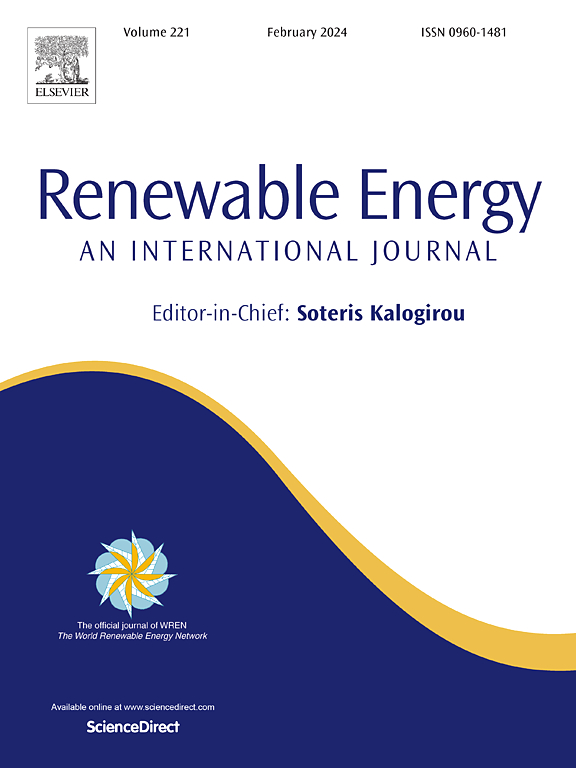具有两阶段特征探索的多维可解释风速预报模型
IF 9.1
1区 工程技术
Q1 ENERGY & FUELS
引用次数: 0
摘要
准确的风速预测是优化风能利用的关键,但其固有的随机性、非线性和区域变异性给风速预测带来了重大挑战。现有模型还缺乏多维可解释性,限制了它们的实际应用。为了解决这些问题,我们引入了一种新的短期风速预测模型,该模型结合了最先进的技术:气象数据的两阶段特征选择、雪消融优化器(SAO)和时间融合变压器(TFT)。对气象特征进行算术和非线性处理,并结合统计特征提取,形成综合特征集,捕捉风速序列中独特的波动特征。两阶段特征选择策略确保有效的特征信息和控制输入质量。最后,TFT结果和树形分析为输入和预测过程构建了一个多维的可解释分析框架。该方法对Williams风电场4个风速数据集均具有较好的预测效果,春、夏、秋、冬4个季节的mape分别为6.7%、6.29%、16.22%和12.72%。它还为决策者提供了从特征工程到预测建模的清晰分析,有助于有序的能源规划和战略布局。本文章由计算机程序翻译,如有差异,请以英文原文为准。
A multi-dimensional interpretable wind speed forecasting model with two-stage feature exploring
Accurate wind speed forecasting is critical for optimizing wind energy utilization, yet its inherent stochasticity, nonlinearity, and regional variability pose significant challenges. Existing models also lack multidimensional interpretability, limiting their practical utility. To address these issues, we introduce a new short-term wind speed prediction model with an hourly time span that combines state-of-the-art techniques: a two-stage feature selection for meteorological data, snow ablation optimizer (SAO), and temporal fusion transformer (TFT). Meteorological features are processed arithmetically and nonlinearly and combined with statistical feature extraction to form a comprehensive feature set that captures the unique fluctuating features in the wind speed series. A two-stage feature selection strategy ensures valid feature information and controls input quality. Finally, the TFT results and tree SHAP construct a multidimensional interpretable analytical framework for the input and forecasting process. The proposed method shows good prediction performance on all four wind speed datasets of the Williams Wind Farm, with MAPEs of 6.7 %, 6.29 %, 16.22 %, and 12.72 % in spring, summer, fall, and winter, respectively. It also provides decision makers with a clear analysis from feature engineering to predictive modeling, which contributes to orderly energy planning and strategic placement.
求助全文
通过发布文献求助,成功后即可免费获取论文全文。
去求助
来源期刊

Renewable Energy
工程技术-能源与燃料
CiteScore
18.40
自引率
9.20%
发文量
1955
审稿时长
6.6 months
期刊介绍:
Renewable Energy journal is dedicated to advancing knowledge and disseminating insights on various topics and technologies within renewable energy systems and components. Our mission is to support researchers, engineers, economists, manufacturers, NGOs, associations, and societies in staying updated on new developments in their respective fields and applying alternative energy solutions to current practices.
As an international, multidisciplinary journal in renewable energy engineering and research, we strive to be a premier peer-reviewed platform and a trusted source of original research and reviews in the field of renewable energy. Join us in our endeavor to drive innovation and progress in sustainable energy solutions.
 求助内容:
求助内容: 应助结果提醒方式:
应助结果提醒方式:


